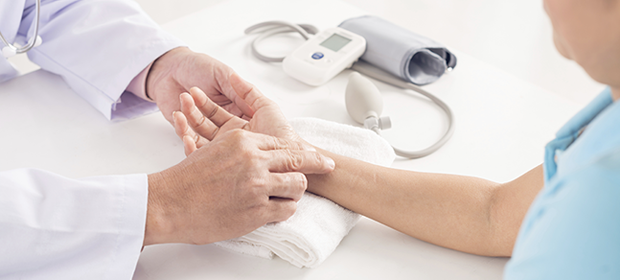A recent study published by the Journal of the American Medical Association suggests that the Patient-Centered Medical Home (PCMH) model can not only boost cancer screening rates overall but, in particular, can help reach lower socioeconomic groups. The study included more than 2,000 Michigan primary care practices in the Blue Cross Blue Shield of Michigan (BCBSM) Physician Group Incentive Program, which rewards member groups for adopting a patient-centered, team-based approach to care. In an editor’s note, Dr. Mitchell Katz wrote: “It is heartening to see that a key intervention in health reform – the creation of patient-centered medical homes – may finally help us narrow the gaps in our healthcare system that exist across socioeconomic status.” Below we share key learnings and next steps from Dr. Michael Paustian, a study author and BCBSM Health Care Manager for Clinical Epidemiology & Biostatistics:
- What prompted your interest in this research? The reasons for conducting this research are multi-faceted. There is increasingly a need to look at screening rates by race or for socioeconomically disadvantaged populations to inform outreach, and in conjunction with the BCBSM social mission. Practices located in socioeconomically disadvantaged areas often have greater opportunities for improvement in screening rates that are used in accreditation, but these practices are providing care to patient populations that face challenges – from transportation problems to lower literacy rates and difficulty paying for services – that larger well-funded practices typically don’t. So we wanted to see whether the effects of PCMH were uniform across practice environments, or whether the model has differing benefits based on where it is implemented.
- What surprised you during the process and in the results? I’m not sure we were surprised by the findings that the effects on cancer screening rates are different by socioeconomic context, but perhaps a bit surprised about the magnitude of the differences in the effects. That the disparities in cancer screening rates between high and low socioeconomic practices could essentially be cut in half through successful adoption of the PCMH model provides a glimmer of hope that we may finally have an intervention capable not just of improving population health but also reducing health disparities.
The disparities in cancer screening rates between high and low socioeconomic practices could essentially be cut in half through successful adoption of the PCMH model. – Dr. Michael Paustian, Blue Cross Blue Shield of Michigan
- What has been the response?
In general we have received positive feedback both internally and externally. There is, however, still a need to determine whether this finding only applies to a commercially insured population or whether these same types of effects and disparity reductions are observed for a Medicaid or uninsured population. - What impact do you hope the study will have?
I think one of the impacts we hope to have is that groups delivering PCMH programs give adequate attention to the context of their program, both in how it is designed and how it is delivered. One-size fits all approaches may not be the optimal approach for PCMH. Likewise when people read a study about PCMH, we hope this study encourages readers to pay attention to the context in which the program was implemented – which may help determine why or why not the program achieved its intended outcomes. - How are the results influencing your own work?
The study findings are likely to influence further work as the PCMH program evaluation continues by examining whether observed outcomes in costs, utilization, or quality also are likely to vary by practice context.
Addressing health disparities is a very elusive challenge for both the fields of public health and medicine in the United States (US), thus results like these are extremely encouraging. Notes Dr. Darline El Reda, Director II for Health Care Value Data Analytics at BCBSM: “The evidence is growing related to positive impacts on cost and quality for patients receiving care from physicians actively implementing and working within PCMH practices across the US. The fact that this model may also address the challenges related to health disparities is even more reason to continue with this model of practice transformation.”


